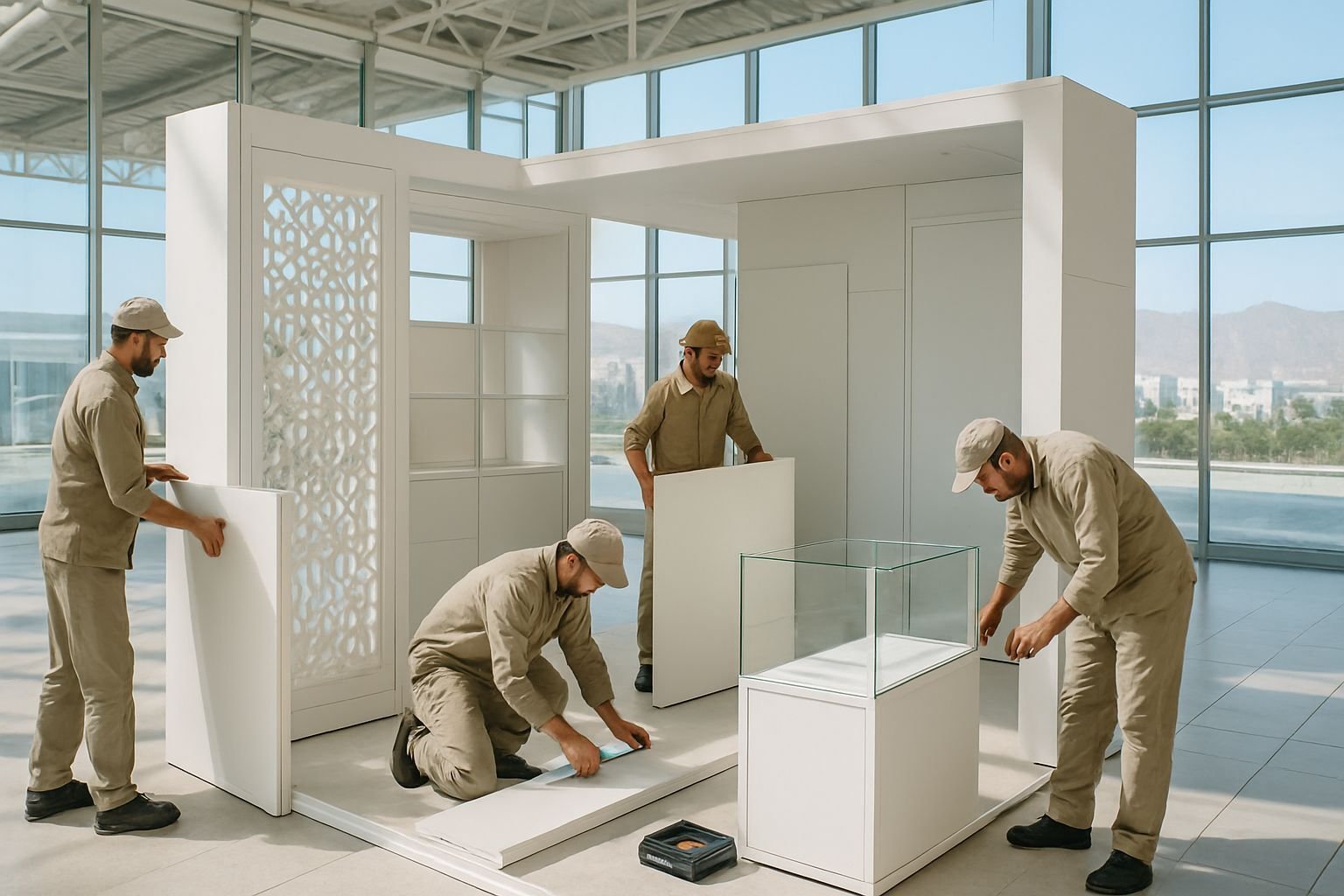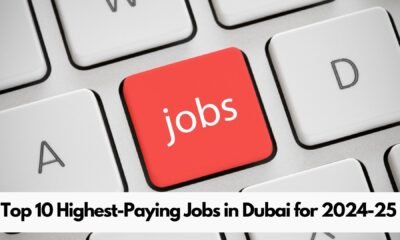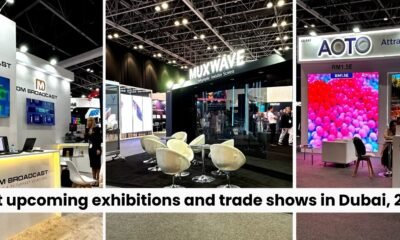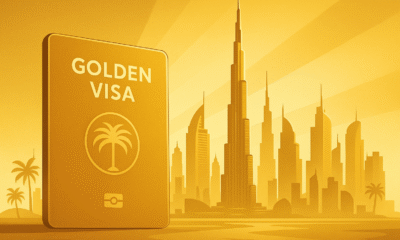Blog
How Do Exhibition Stand Builders in Oman Boost My Booth?

Introduction to Exhibition Stand Construction
Exhibitions provide a platform for businesses to showcase products, connect with prospects, and strengthen brand presence. The quality of the physical space often determines how effectively a message is communicated. When a company decides to invest in a temporary structure, the expertise of the builder becomes a decisive factor. Professional builders translate design concepts into tangible environments that attract visitors, support functional needs, and reflect the brand’s identity. Understanding the full scope of services offered by specialists helps organizers set realistic expectations and achieve a polished result.
Understanding the Omani Exhibition Landscape
Oman’s trade fairs and industry events have grown considerably in recent years, drawing participants from across the Gulf region. Organizers seek stands that combine traditional craftsmanship with modern aesthetics, reflecting the nation’s cultural heritage while embracing contemporary trends. Climate considerations, such as high temperatures and occasional sand, also influence material selection and structural design. Builders familiar with local regulations, venue specifications, and logistical challenges can navigate these factors more efficiently, ensuring that each project complies with safety standards and delivers a seamless visitor experience.
Key Criteria for Selecting a Reliable Builder
Choosing the right partner involves evaluating several core capabilities. Experience in delivering projects of similar size and complexity is essential. A portfolio that showcases a range of styles-from minimalist booths to elaborate multi-level structures-demonstrates flexibility. Technical proficiency, including knowledge of load‑bearing calculations, electrical installations, and fire safety measures, protects both the exhibitor and the venue. Additionally, the ability to coordinate with vendors, manage timelines, and adapt to last‑minute changes reflects a builder’s professionalism.
Experience and Track Record
Builders with a history of successful installations often possess refined processes that reduce risk. References from previous clients can provide insight into reliability, communication, and problem‑solving abilities. When a builder has repeatedly delivered on time and within budget, confidence in their capacity to handle future projects increases.
Material Knowledge and Sustainability
Materials such as aluminum, modular panels, and recyclable fabrics are common choices for exhibition stands. Sustainable options-like reusable components and low‑VOC finishes-are increasingly demanded by environmentally conscious brands. Builders who stay current with green building practices can help exhibitors reduce waste and convey a responsible brand image.
Design Considerations for Impactful Booths
The visual and functional aspects of a stand must work together to capture attention and facilitate interaction. Effective design starts with a clear understanding of the exhibitor’s objectives, target audience, and key messages. Layout planning should prioritize traffic flow, product placement, and areas for demonstrations or meetings. Lighting, graphics, and signage contribute to brand storytelling, while ergonomic furniture ensures visitor comfort.
Brand Integration
Consistent use of colors, logos, and typography reinforces brand identity. Custom graphics printed on high‑resolution panels can create immersive environments that differentiate a booth from competitors. Incorporating tactile elements-such as textured surfaces or interactive displays-adds a sensory dimension that encourages longer dwell times.
Flexibility and Modular Design
Modular systems allow exhibitors to reconfigure components for different event sizes or future shows. This approach maximizes return on investment, as modules can be stored and reused rather than discarded after a single use. Builders who specialize in modular construction provide valuable guidance on how to achieve both flexibility and aesthetic appeal.
Project Management and Timelines
Effective project management ensures that design, fabrication, shipping, installation, and dismantling occur smoothly. A detailed schedule outlines milestones, such as design approval, material procurement, and on‑site assembly. Clear communication channels between the exhibitor, designer, and builder reduce misunderstandings and keep the project on track.
Pre‑Event Coordination
Before the event, builders typically conduct site visits to assess dimensions, loading docks, and power availability. These inspections inform accurate measurements and help avoid surprises during installation. Coordination with venue staff also clarifies restrictions on height, weight, and fire safety compliance.
Installation and Dismantling
On the day of the event, a well‑trained crew assembles the stand according to the approved plan, ensuring that all components fit precisely. After the exhibition, the same team efficiently dismantles the structure, packages components, and arranges transport back to the warehouse. Prompt removal minimizes venue fees and allows exhibitors to transition smoothly to the next activity.
Budgeting Without Compromising Quality
While cost is a practical concern, focusing solely on the lowest price can lead to subpar results. A balanced budget considers design complexity, material durability, labor, and logistics. Transparent quotes that break down each cost element enable exhibitors to make informed decisions. Builders who provide detailed estimates help clients allocate resources wisely, ensuring that essential features-such as lighting and branding-receive appropriate investment.
Incorporating Technology and Interactivity
Modern exhibitions often feature digital elements that engage visitors. Interactive touchscreens, augmented reality experiences, and video walls can showcase product features in dynamic ways. Builders who collaborate with AV specialists ensure that structural supports accommodate the weight and power requirements of these technologies. Proper cable management and ventilation are also critical to maintain safety and performance.
Audio‑Visual Integration
Strategic placement of speakers, projectors, and lighting rigs enhances the overall atmosphere. Builders must coordinate mounting points and ensure that equipment is securely fastened. Testing all systems before the event prevents technical glitches that could disrupt presentations.
Logistics and Transportation Planning
Efficient logistics reduce the risk of damage and delays. Builders often work with freight companies experienced in handling exhibition materials. Proper packaging, labeling, and inventory tracking simplify the loading and unloading processes. Additionally, understanding customs regulations-if components cross borders-prevents unexpected hold‑ups.
Maintenance and Post‑Event Services
After an exhibition, stands may require cleaning, repairs, or upgrades before the next use. Builders who offer maintenance services help preserve the appearance and structural integrity of the booth. Routine inspections identify wear and tear, allowing for timely replacement of damaged parts and ensuring that the stand remains ready for future events.
Evaluating Potential Contractors
When evaluating potential contractors, it is useful to consider their approach to client collaboration. Builders that involve clients early in the design process tend to produce outcomes that align closely with brand goals. Requesting a detailed proposal that outlines design concepts, material specifications, and a project timeline provides a clear roadmap for the partnership.
Risk Management and Insurance
Professional builders typically carry liability insurance that protects both the exhibitor and the venue in case of accidents or property damage. Verifying insurance coverage is a prudent step that safeguards against unforeseen incidents.
Benefits of Working with a Specialized Design Firm
Specialized design firms bring a deep understanding of exhibition trends, visitor psychology, and visual storytelling. Their expertise enables them to translate marketing objectives into spatial experiences that resonate with audiences. By combining creative vision with technical know‑how, they deliver stands that are both aesthetically striking and functionally sound.
Creative Collaboration
Design firms often employ graphic designers, architects, and engineers who collaborate to produce cohesive concepts. This multidisciplinary approach ensures that every element-from structural stability to graphic impact-receives focused attention.
Local Insights: Tailoring Stands for Omani Audiences
Understanding cultural preferences can enhance the effectiveness of a booth. Incorporating traditional motifs, Arabic typography, or locally sourced materials can create a sense of familiarity and respect for regional heritage. Builders who are attuned to these nuances can advise on subtle design choices that strengthen connections with local visitors.
Case Study: A Successful Exhibition Presence
One recent trade show featured a company that required a spacious, open‑plan booth with multiple meeting rooms. The builder began with a thorough site analysis, noting ceiling height restrictions and available power sources. A modular aluminum frame was selected for its strength and ease of assembly. The design incorporated a central display island, interactive touch panels, and a lounge area with comfortable seating. Throughout the project, the builder maintained clear communication, providing weekly updates and adjusting the schedule to accommodate a late design revision. The final installation was completed two days before the event, allowing ample time for a final walkthrough and minor adjustments. The client reported high visitor engagement and praised the seamless execution.
Choosing the Right Partner: A Summary Checklist
- Verify experience with similar project sizes and industry sectors.
- Review portfolio for design diversity and quality.
- Confirm knowledge of local regulations and venue requirements.
- Assess material expertise, including sustainable options.
- Ensure transparent budgeting and detailed cost breakdowns.
- Check availability of project management and logistics support.
- Confirm insurance coverage and risk mitigation policies.
- Look for a collaborative design approach that includes client input.
Conclusion
Exhibition stand builders play a pivotal role in transforming brand concepts into engaging physical spaces. By focusing on local expertise, design innovation, and meticulous project management, they help businesses make lasting impressions at trade shows and events. For organizations seeking to elevate their presence in Oman’s vibrant exhibition scene, partnering with a seasoned professional can deliver both aesthetic appeal and functional excellence. The diverse services offered across the industry ensure that each exhibitor can find a solution that aligns with their goals and budget. When the right builder is selected, the result is a stand that not only attracts attention but also supports meaningful interactions, reinforcing brand value long after the event concludes. In the evolving landscape of exhibitions, Stands Bay continues to set a benchmark for quality and creativity.
Exhibition stand builders in Oman
Exhibition stand contractors in Oman
Exhibition stand design company in Oman
Blog
Looking for a GCS Crypto Currency Licence and Registration in Dubai?

Looking for a GCS Crypto Currency Licence and Registration in Dubai?
Welcome to our guide on Crypto currency license in Dubai. At GCS, we specialize in providing top-quality Crypto currency license services to meet your needs.
Why Choose Our Crypto currency license Services?
Our team of experienced professionals understands the importance of quality Crypto currency license in Dubai. We pride ourselves on delivering exceptional results and customer satisfaction.
Our Approach to Crypto currency license
We take a comprehensive approach to Crypto currency license, ensuring that every aspect of our service meets the highest standards. Our process includes:
- Thorough consultation to understand your specific needs
- Customized solutions tailored to your situation
- Ongoing support throughout the process
- Transparent communication at every step
Important Resources
For more information about Crypto currency license, check out these valuable resources:
- Crypto Currency Licence in Dubai
- Dubai Crypto Currency Licence
- Crypto Currency Registration in Dubai
- Dubai Crypto Currency Registration
- GCS Crypto Currency Licence in Dubai
Get Started Today
Ready to experience the difference our Crypto currency license services can make? Contact GCS today to schedule your consultation. Our team is standing by to answer your questions and help you get started on the path to success.
Don’t wait – reach out to us today and discover why so many people in Dubai trust GCS for their Crypto currency license needs.
Blog
Best Crypto currency license Services in Dubai

Best Crypto currency license Services in Dubai
Welcome to our guide on Crypto currency license in Dubai. At GCS, we specialize in providing top-quality Crypto currency license services to meet your needs.
Why Choose Our Crypto currency license Services?
Our team of experienced professionals understands the importance of quality Crypto currency license in Dubai. We pride ourselves on delivering exceptional results and customer satisfaction.
Our Approach to Crypto currency license
We take a comprehensive approach to Crypto currency license, ensuring that every aspect of our service meets the highest standards. Our process includes:
- Thorough consultation to understand your specific needs
- Customized solutions tailored to your situation
- Ongoing support throughout the process
- Transparent communication at every step
Important Resources
For more information about Crypto currency license, check out these valuable resources:
- Crypto Currency Licence in Dubai
- Dubai Crypto Currency Licence
- Crypto Currency Registration in Dubai
- Dubai Crypto Currency Registration
- GCS Crypto Currency Licence in Dubai
Get Started Today
Ready to experience the difference our Crypto currency license services can make? Contact GCS today to schedule your consultation. Our team is standing by to answer your questions and help you get started on the path to success.
Don’t wait – reach out to us today and discover why so many people in Dubai trust GCS for their Crypto currency license needs.
Blog
Dubai 2025: The Tech Revolution Unveiled – From Smart Cities to AI‑Driven Innovation
Dubai has always been a city that looks toward the future. From its iconic skyline to its ambitious plans for sustainability, the spirit of innovation is woven into every project. In 2025, the city is stepping into a new era where technology is not just a tool but a living system that powers everyday life, reshaping how residents work, travel, shop and connect.
1. The Birth of a Smart City
When most people think of a smart city, images of connected traffic lights, billboards that update in real time, and drones delivering packages come to mind. Dubai’s journey began with the Smart Dubai programme, which set out to create a city where digital services are delivered more efficiently and transparently. The programme’s core goals were:
- Digital identity for citizens and residents.
- Integrated data platform for city services.
- Smart infrastructure that adapts to real‑time needs.
- Encouragement of start‑ups and tech investment.
These pillars laid the groundwork for a city that can react to the needs of its people instantly, making daily life smoother and more rewarding. This foundation also helped launch a wave of projects that pushed Dubai ahead of the global curve.
2. Artificial Intelligence Takes the Driver’s Seat
Artificial Intelligence (AI) has become the engine behind many of Dubai’s newest achievements. From predictive policing that helps keep streets safe to AI‑powered logistics that reduce delivery times, the technology is changing every sector.
Transportation and Mobility
The Dubai Metro’s robots now run maintenance checks without human intervention. Autonomous buses navigate the sidewalks, delivering passengers between business districts with minimal delays.
Healthcare Revolution
AI algorithms predict potential health risks based on lifestyle and genetic data, allowing doctors to intervene early. Virtual consultations powered by AI chatbots provide instant medical advice, freeing up specialists for complex cases.
Public Safety and Law Enforcement
Machine‑learning models detect unusual crowd movements and highlight potential security threats before they grow. Law‑enforcement drones patrol the city, ensuring that emergency response is swift and efficient.
By embedding AI into everyday services, Dubai turns its metropolis into a responsive organism that learns and grows with its people.
3. Blockchain: The Invisible Ledger of Modern Life
While blockchain has made headlines in finance, its real power lies in its transparency and security. Dubai has leveraged the technology to create tamper‑proof systems across government, healthcare, and logistics.
One notable example is the Digital Health Pass—an immutable record that tracks vaccination, medical history, and health alerts. Similarly, property transactions are recorded on a blockchain, cutting down paperwork and fraud while speeding up closing times.
These applications not only add value for the government but also provide a sense of trust for residents and investors alike.
4. The Architecture of Tomorrow: Smart Skyscrapers and Infrastructure
Dubai’s skyline is home to more than just office space; it is a living laboratory for sustainable design. Buildings now incorporate:
- Energy Harvesting Windows: Transparent solar panels that provide electricity to the building’s systems.
- Responsive Facades: Skin that adjusts to sunlight and temperature, keeping interiors comfortable while lowering energy usage.
- Water Recycling Systems: On‑site purification that reduces municipal water demand.
These features not only reduce carbon footprints but also lower operational costs, making high‑rise living accessible to a wider audience.
5. Technology Hubs and the Start‑up Ecosystem
The city’s growth is driven partly by its vibrant ecosystem for technology start‑ups. Numerous incubators provide mentorship, financing, and access to venture capital. Key areas of focus include:
- FinTech solutions simplifying banking for the cloud‑native generation.
- EdTech platforms that bring personalized learning to anyone on the move.
- HealthTech that integrates wearable data with AI diagnostics.
- Supply chain technology creating end‑to‑end traceability.
Dubai’s open data initiatives give start‑ups a wealth of information—making it easier to test and scale products that fit the local market and can also export worldwide.
6. The Human Touch: Building Tech Culture
Innovation is only as good as the people behind it. Dubai invests heavily in human capital: from schools teaching coding from kindergarten to higher‑education programmes that put AI and blockchain at the forefront.
Workshops lead residents to create their own mini‑projects, giving them a sense of ownership over the urban digital narrative. These efforts foster a public appetite for technology, ensuring that the next wave of ideas will come from diverse voices.
7. Looking Ahead: What Lies Beyond 2025?
The ambition never stops. While 2025 has delivered massive strides, the sights are now set on a more interconnected yet sustainable system.
- Zero‑carbon buildings enabled by nanomaterials.
- Hyper‑fast transport links into the desert, turning islands into bustling hubs.
- Advanced AI that helps residents live healthier lifestyles by predicting needs.
- Fully autonomous commercial districts where order and efficiency thrive.
These future projects are based on data collected in real time, meaning the city can adapt quickly to changing aspirations.
Dubai’s transformation demonstrates how creating a digital ecosystem, backed by supportive policy, can accelerate progress for all residents and set a global example for future city planning.
Want to read more about how Dubai is turning skyscrapers into AI hubs? Explore our story on skyscraper AI transformation.
Curious how the city’s smart system uses AI and blockchain to improve everyday life? Dive into the pulse of Dubai’s tech evolution.
Still wondering how visionary dreams turned into a reality of smart cities and AI? Discover the journey of Dubai’s tech pulse.
-

 Business2 years ago
Business2 years agoTop 10 Highest-Paying Jobs in Dubai for 2024-25
-

 Business2 years ago
Business2 years agoTop 10 Business Opportunities in Dubai for 2024-2025
-

 Business2 years ago
Business2 years agoBest upcoming exhibitions and trade shows in Dubai, 2024
-

 Business1 year ago
Business1 year agoHow Much Does It Cost to Open a Company in Dubai in 2024?
-

 Sports2 years ago
Sports2 years agoTop 5 Upcoming International Sporting Events in Dubai (2024-2025)
-

 Blog2 years ago
Blog2 years agoPlaces to Visit in Ras Al Khaimah
-

 Latest4 months ago
Latest4 months agoDubai Golden Visa 2025: Everything You Need to Know About Eligibility, Benefits and Application Process
-

 Business2 years ago
Business2 years agoTop 5 Networking Events for Businesses in Dubai in 2024



